Excavation of the Western Han Cemetery at Lingshenghu, Dingtao County, Shandong Province
Chinese Institute of Archaeology
Source - http://www.kaogu.cn/en/detail.asp?ProductID=3353
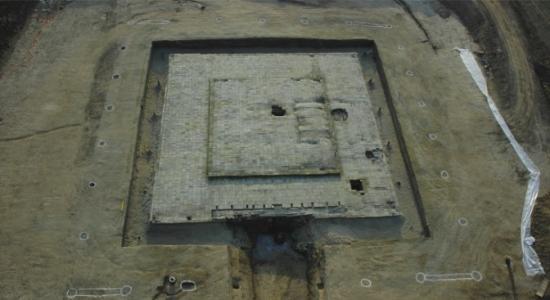
The cemetery is located 200 meter northwest of Lijiacun Village in Maji Township, Dingtao County, Shandong Province. There were three huge earthen mounds, which have been destructed long ago. Robbed repeatedly, the cemetery faces many difficulties to be preserved. With the approval of State Bureau of Cultural Relics, the joint archaeological team of Shandong Institute of Archaeology, Heze Cultural Relics Office, and Cultural Relics Office of Dingtao County has conducted an excavation to the cemetery.
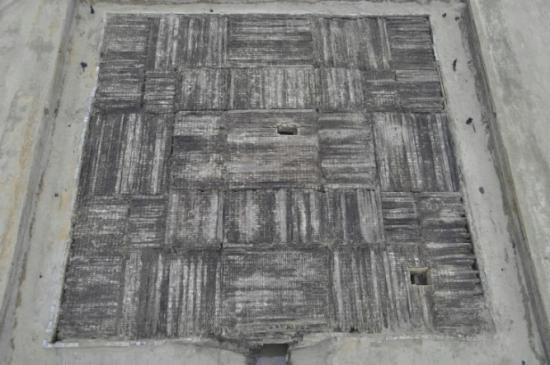
The tomb has an earthen mound composed of two parts. The main part, right above the tomb chamber, is basically in square shape and has three stages like a pyramid. The stages then are covered with the second part, a slanting layer of tamped earth. The whole mound measures 150 m in diameter. Seen from tamping traces, the tamping tool should have a flat end measuring 5-8cm in diameter. Some places are tamped with a sheaf of such tools, and some traces are made in lines.
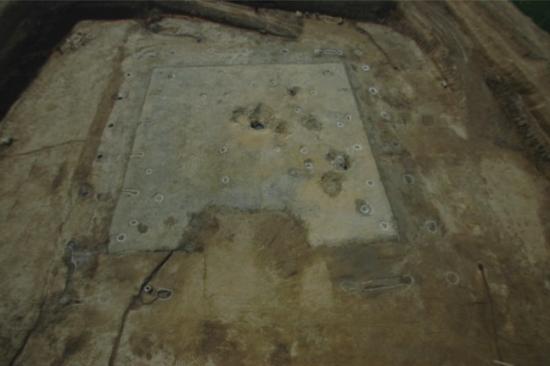
The tomb has a great wooden chamber structure resembling the Chinese character 甲. The slanting passage is towards east, with a secondly stand (Ercengtai) at each side. The tomb pit, which four walls were built on the ground with clamped tampered earth, is in nearly square shape with four sides measuring 28.3-28.46m long. Around the pit opening there are 26 equally spaced post holes. The upper part of the pit is filled with fine sand and green mud. Around the chamber fine sand is placed and there are also 12 posts corresponding to the outer ones.
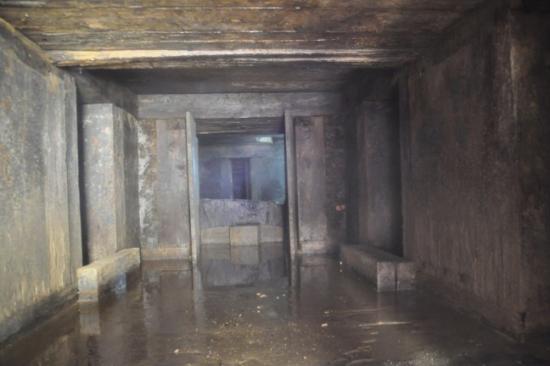
The whole chamber is in square shape with each side 23m long. The top and walls are sealed with bricks. Under the two lays of top bricks there are thin wooden planks covering the fist layer of timbers. The chamber structure, symmetrically in south-north direction, consists of the enclosing cypress structure, the corridor and its 12 side chambers, the ante-chamber, the middle chamber, the rear chamber and their 8 side chambers, as well as passages connecting main chambers and four doorways. The side chambers of the ante- and rear-chambers both have a shrine. The middle chamber contains a lacquer wooden coffin. The enclosing cypress structure is built with 20,994 cypress timbers each measuring 1.15 m long. All side chambers’ walls are built with cypress timbers each measuring 0.70m long, totally 12,006 pieces. Between the corridor and the middle chamber there are also 2,412 heaped cypress timbers, each measuring 1.15m long. For building all cypress timber structure, each three timbers are tenoned together to form a unit. The whole chamber is roofed with four or five layers of timbers, each measuring 30-40cm thick and various lengths. The total volume of used woods reaches 2,200 m³.
All of them are in good preservation. The top and surrounding bricks are all made of clay mixing with straw. Many of them bear red, black or inscribed characters and signs, or molded patterns. Most characters mention human names, totaled more than 30. Some are place names and numbers.

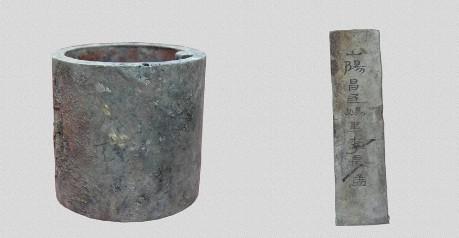
Elaborately built, the tomb in good preservation possesses a huge size and a unique structure. Judged from the tomb structure, it could be dated to late Western Han Dynasty. It could be rated to be the largest tomb in Shandong Province. The structure of cypress timbers is also the first find in the region. Its complex structures, including the chambers built on the ground, group of pillars around the pit and in filled sand extending 38m in length, the cypress timber structures in many parts of the tomb and sealed bricks with many sorts of inscriptions, are all very rare among previous-found large-sized tombs. Even among those with cypress timber structure, it is the largest one with the highest class, the best preserving condition and an approximately clear dating, probably showing it stands at a well-developed and later stage of this kind of burial system. The complex elaborate structure is indicative of a higher social class of the occupant, probably belong to a king, but it is obviously higher than all previous kings’ standard. It would be very valuable for identifying the tomb occupant and studying the relation between Dingtao King’s royal family and the court of Western Han. (Translator: Tong Tao)